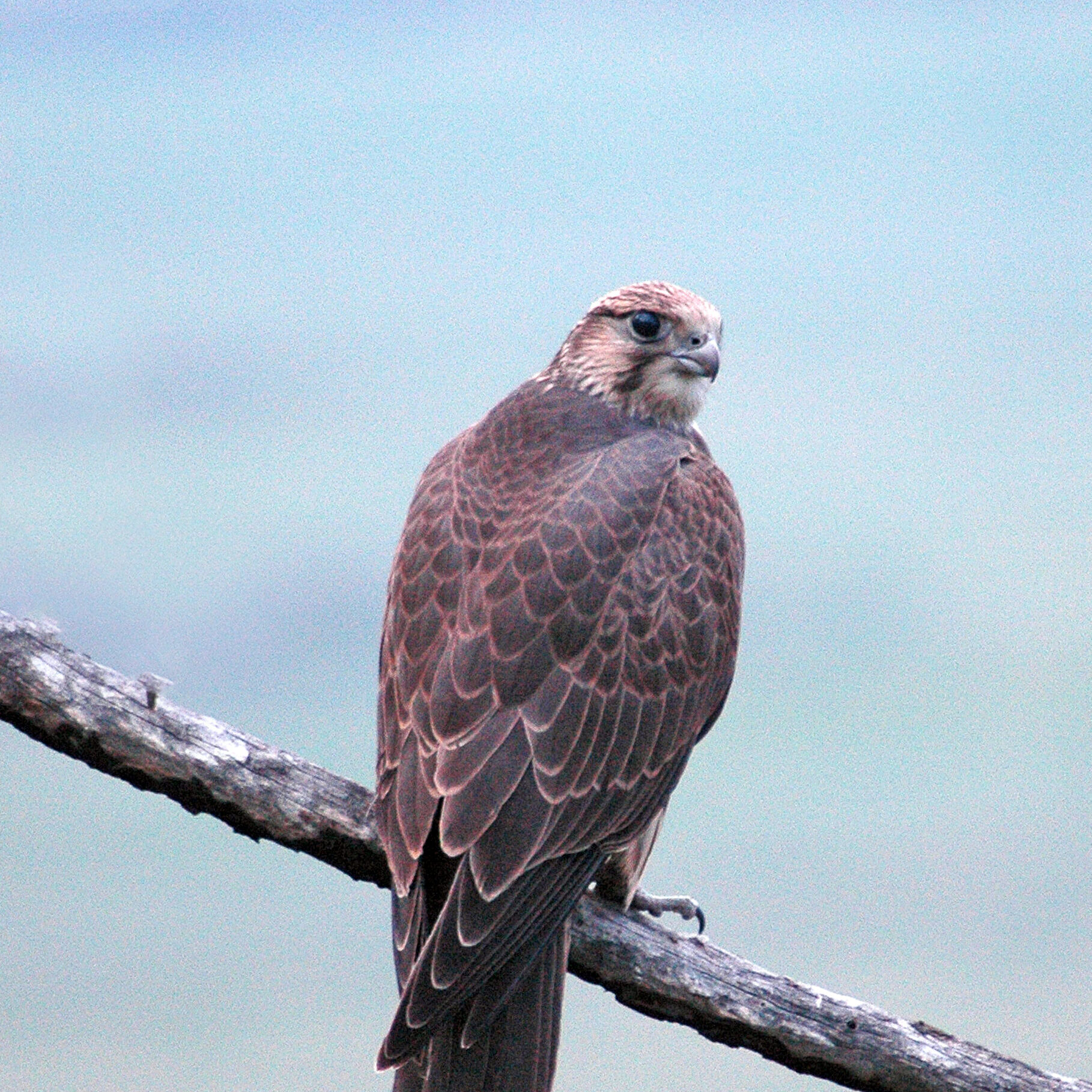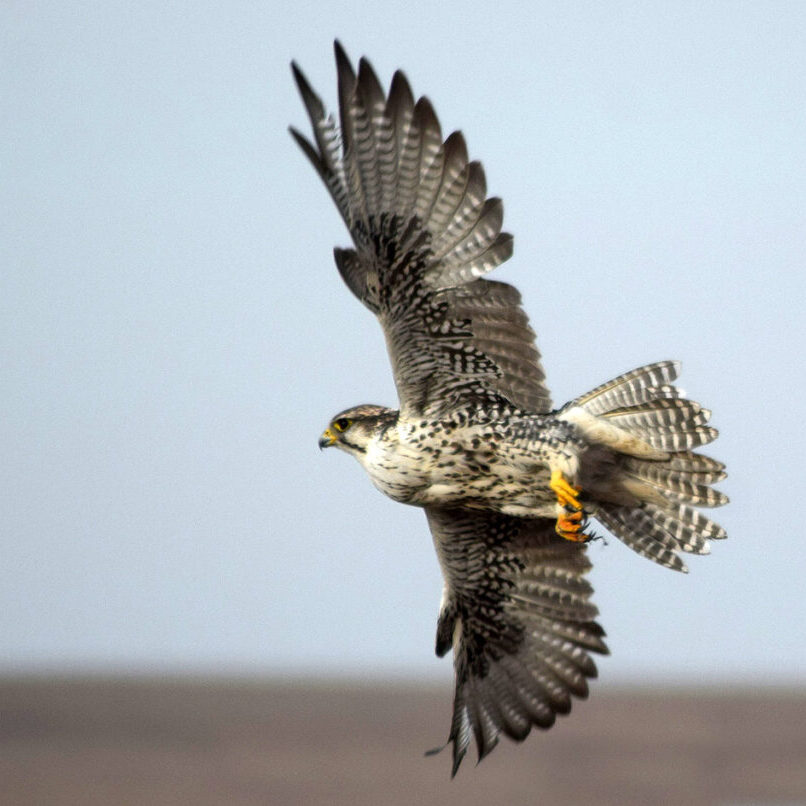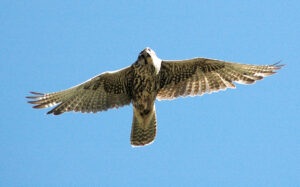Saker falcon

Saker Falcon (Falco cherrug) is the largest falcon in Kazakhstan, which until the early 1990s was a common breeding species, but in recent decades has become extremely rare and completely disappeared in some areas. The Saker Falcon population in Kazakhstan decreased by 80% from 1990 to 2015 and was estimated at 1000–1500 breeding pairs (http://rrrcn.ru/ru/archives/25433). In Kazakhstan, comprehensive censuses of this species are not carried out consistently. At present, the Saker Falcon population has possibly decreased by more than 90%.
Conservation status
“Endangered” (EN) listed by the International Union for Conservation of Nature (IUCN);
“Species that are nearly or already extinct” (Category I) in the Red Book of the Republic of Kazakhstan (PDF link);
It is listed in Appendix II in the CITES Convention;
Included in the List of rare and endangered animal species of the Republic of Kazakhstan.
Appearance
The Saker Falcon is a large falcon, in most cases with reddish-yellow or brown tones in color. The coloration of the back is from dark brown to ochre-brownish or gray, with ochre, and sometimes white borders of covert feathers, which acquire a clear striping in some birds. The underside of the body is white or ochre, with sparse drop-shaped or longitudinal brown streaks, rarely without them. There are clear stripes or teardrop-shaped streaks on the "trousers" of most Saker Falcons of the eastern subspecies, in some individuals merging into a dark background (RRRCN).

Species distribution
Previously, it nested throughout the Kazakhstan, but at present, nesting groups have been preserved only in Mangyshlak, in the lower reaches of the Irgiz and Turgay, the forest-steppe of northern Kazakhstan, the granite massifs of the Kazakh uplands, in the Balkhash region, and in the mountains of the south and southeast of Kazakhstan. On migration occurs everywhere, winters in the desert and semi-desert zone from the Caspian Sea to Balkhash, in the foothills of the Altai and Tien Shan, in small numbers in the Irtysh basin on the plain (RRRCN).
Threats
- Illegal catching of Saker Falcon and smuggling into the Persian Gulf countries for resale for the purposes of falconry;
- Death from an electric shock on overhead power lines (OPL) with a capacity of 6-10 kV.

